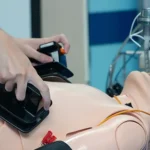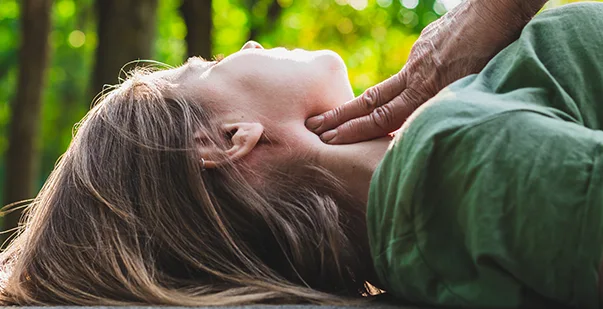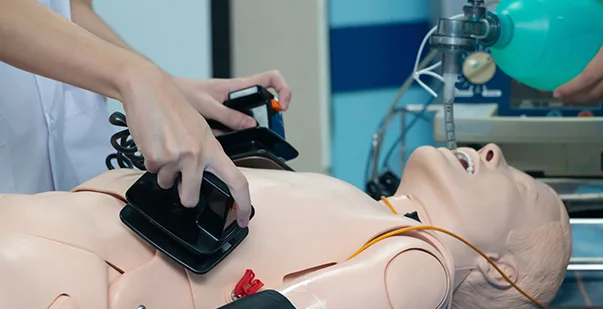The fear that grips you when a drink goes down the “wrong way” or a piece of food gets stuck in your airway is truly terrifying. Most of us have experienced having our lives flash before our eyes for the brief time we wheeze and cough to throw the blockage out. Choking occurs when an object becomes lodged in the throat or windpipe, obstructing the flow of air. Choking can be potentially fatal. It deprives the brain of oxygen. If someone you know is choking, give first aid for choking as soon as possible.
Common causes of a patient choking
Watch out for these causes and signs of choking:
- Grasping the throat with either one or both hands
- A panicked, shocked, or perplexed expression
- Inability to speak
- Breathing that sounds strained or noisy
- When trying to breathe, there are squeaky or wheezing sounds
- Coughing, which can be either weak or strong
- Skin, nails, and lips turn gray or blue
- Fainting or loss of consciousness
What is the first aid method for handling a choking patient?
Choking victims may clutch their chest or neck and be unable to speak, breathe, or cough. If you’re alone, and choking; call 911 or your local emergency number without delay. Here are the first-aid steps to help someone who is choking:
- If the blockage is severe, victims may clutch their chest or neck. They may be unable to breathe, cough, or speak. That’s when you need to start assisting them.
- Bend them forward and strike their back with up to 5 back blows with the heel of your hand. Hitting them on the back will cause a strong vibration and pressure in the airway. Doing this often dislodges the blockage. They will be able to breathe normally again when the airway clears.
- If the victim continues to choke, perform up to five abdominal thrusts. Hold the victim firmly around the waist. Pull inwards and upwards slightly above their navel. This is known as the Heimlich maneuver choking treatment. It forces the air out of the lungs and may dislodge the obstruction.
- Repeat the steps above if the victim continues choking or call 911 for urgent medical assistance.
In the case of children, below are the steps to perform first aid for a child who is choking:
- Give the choking child up to five back blows, striking them firmly between the shoulder blades. Let’s say the object is not dislodged by back blows, proceed to step 2.
- Hold the child firmly around the waist. Pull them inwards and upwards above their belly button. Give up to five abdominal thrusts.
- Repeat the back blows and abdominal thrusts till the blockage dislodges, help arrives, or the child becomes unresponsive. If you are unable to dial 911, have someone else do so.
It is a good idea to be prepared instead of relying on others to handle such emergencies. Taking a first aid certification course for personal reasons or as a part of your work requirement will always help you in any scenario.
Things not to do when someone is choking
- Do not ask the victim if they are okay. If they are struggling to breathe, they are not okay. Instead, ask them if they are choking, as they could be suffering from asthma or something else. You should be able to provide the best type of First Aid assistance if you know their exact situation.
- Do not attempt the Heimlich maneuver unless required. It can break ribs and damage internal organs.
- Avoid putting your fingers in their mouth because they may bite you, and the object may further get lodged in the trachea.
- If they become unconscious, do not begin CPR by giving them breaths. Begin with chest compressions at first, as it may push the object out as the muscles relax.
- If a child is choking, do not pick up and turn the child upside down.
PDF for Step-by-Step Guide to First Aid for Choking
Conclusion
Young children and the elderly are the most vulnerable to choking. Staying a step ahead and preparing to handle such emergencies will help you keep your family and workplace safe. Take the first aid course from American HealthCare Academy today!










